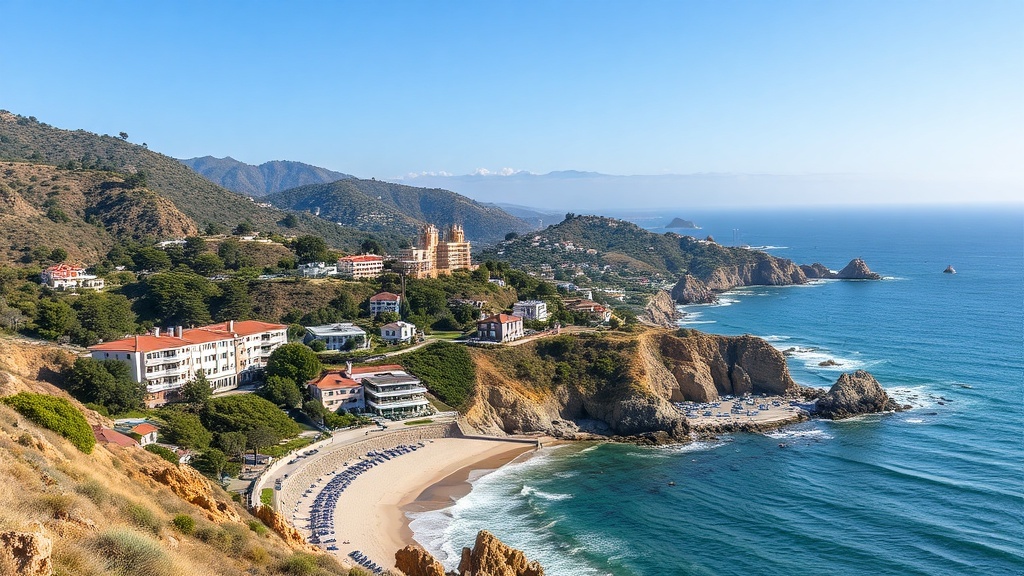Malibu blends dramatic coastline, active outdoor life, and a strong conservation ethic into a compact stretch of the Pacific that attracts beachgoers, surfers, hikers, and food lovers alike.
Whether you’re planning a day trip or looking for relaxed coastal living, knowing how to experience Malibu responsibly makes the visit smoother and more enjoyable.
Beaches and waterfront life
Malibu’s beaches are the main draw. Wide sandy stretches like those with lifeguard stations make for reliable swimming and family-friendly outings, while famous surf breaks draw skilled riders when the swells roll in. Tide pools and coastal bluffs offer easy exploration—low tide reveals marine life, but check local tide charts and signage before scrambling on rocks. The pier and nearby promenades provide scenic photo ops and access to cafés and strolls along the water.
Outdoor recreation beyond the sand
The Santa Monica Mountains meet the sea here, creating steep, scenic trails that reward hikers with panoramic ocean views and wildflower displays.
Popular overlooks and headlands are excellent for sunrise walks, whale watching from cliffs when marine mammals pass offshore, and sunset photography. Biking along the Pacific Coast Highway is iconic, but be mindful of traffic and narrow shoulders—preferred routes and bike lanes can change, so plan ahead.
Dining, shopping, and culture
Malibu’s dining scene mixes casual seafood shacks, coastal cafés, and elevated farm-to-table restaurants. Many spots highlight locally sourced produce and fresh seafood, often with ocean-facing patios.
Art galleries, boutique shops, and cultural sites like historic homes and small museums add variety to a day by the coast—check operating hours and any reservation requirements before you go.

Conservation and community stewardship
Environmental preservation is a strong local focus. Coastal restoration and dune protection projects are frequently underway to safeguard habitat, combat erosion, and improve water quality. Many community groups organize beach cleanups and educational programs; joining a cleanup is a simple way to contribute during a visit. Respecting protected areas, staying on marked trails, and packing out all trash help keep Malibu’s ecosystems healthy.
Practical tips for a smoother visit
– Timing: Weekday mornings and early afternoons are typically less crowded than weekends. Sunrise offers dramatic light for photos with fewer people.
– Parking: Public lots can fill, and permitted street parking rules vary—read signage and be prepared to walk from lot or public transit stops.
– Safety: Lifeguards are posted at major beaches but conditions change quickly; heed red-flag warnings, rip current advice, and posted hazard notices. Keep a close eye on children near water and on cliffs.
– Respect privacy: Malibu includes many private residences and gated properties. Public access points are clearly marked—avoid trespassing on private driveways and pathways.
– Wildfire and weather awareness: The region can shift from calm to hazardous due to high winds or dry conditions. Monitor local advisories and follow evacuation guidance if issued.
– Leave no trace: Take everything you brought with you, avoid disturbing wildlife, and follow local recycling and disposal rules.
Planning and accessibility
Many facilities, parks, and beaches offer accessibility options and parking for visitors with needs—look for official accessibility information before you go. If staying overnight, consider smaller inns and eco-friendly lodgings that prioritize sustainability.
Malibu’s unique mix of rugged coastline, recreational opportunities, and community-driven conservation makes it rewarding to explore with a bit of preparation and respect. Whether you’re hunting a perfect wave, photographing dramatic cliffs, or simply enjoying a seaside meal, approaching Malibu with care ensures the landscape stays resilient and inviting for everyone.